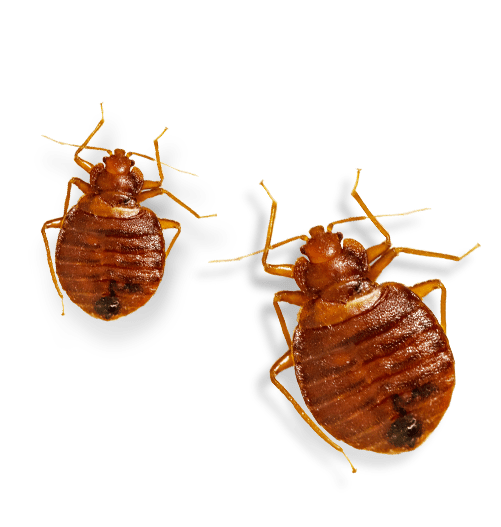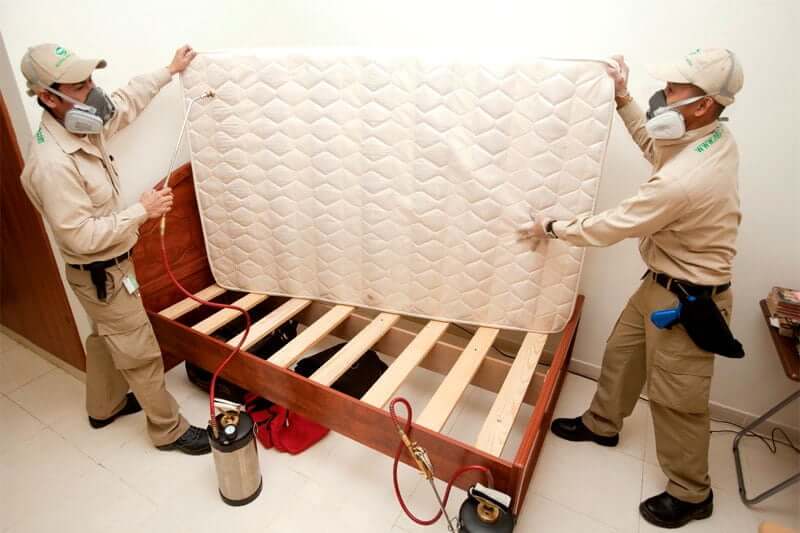Obtain Informed About the Types of Insect Control Techniques and Their Advantages for Property Owners
Comprehending the different pest control methods available to house owners is crucial for efficient parasite administration. Property owners that are educated can make calculated options that not only address insect issues however additionally boost the overall quality of their living atmosphere.
Chemical Bug Control Techniques
Chemical pest control methods are an important component of integrated pest administration techniques for house owners seeking effective services to pest invasions. These approaches involve the application of chemical substances made to eliminate or hinder insects that threaten personal effects, health, and comfort. Common chemicals made use of consist of insecticides, rodenticides, fungicides, and herbicides, each tailored to target specific parasites.
The key advantage of chemical insect control is its quick effectiveness; lots of formulas give immediate outcomes, lowering pest populations substantially in a brief time. In addition, advances in chemical formulations have resulted in products that are more eco-friendly and have reduced poisoning degrees for non-target microorganisms when used appropriately.

Biological Pest Control Strategies
Natural parasite control methods have obtained prominence as house owners look for safer and much more lasting choices to conventional chemical techniques. Organic pest control methods make use of all-natural predators, bloodsuckers, or virus to manage insect populations effectively. This approach is not only eco-friendly but also minimizes the danger of injury to non-target species, consisting of beneficial pests and wildlife.
One of one of the most common organic control techniques involves introducing natural killers right into the setting. Ladybugs can be utilized to regulate aphid populations, while nematodes target soil-dwelling bugs like grubs. Furthermore, parasitoids-- microorganisms that survive or within a host-- can be used to regulate details parasite varieties by laying eggs inside them, inevitably bring about their death.
An additional strategy is making use of biopesticides, which are stemmed from all-natural products such as bacteria, plants, or minerals (bed bug exterminator). These items can successfully target insects while presenting very little risk to pet dogs and people. In general, biological parasite control strategies supply house owners with an effective means of parasite administration that lines up with ecological concepts, promoting a healthier living setting while decreasing reliance on synthetic chemicals
Mechanical Parasite Control Methods
Mechanical insect control strategies include a variety of approaches that physically prevent or remove insects without the use of chemicals. These methods are particularly beneficial for home owners seeking eco-friendly alternatives while making sure the safety of their living areas.
One common approach is using obstacles, such as about pest control catches, nets, and displays, which avoid pests from entering homes or certain areas. Installing home window screens can properly keep pests out, while using physical barriers around yards can prevent bigger bugs like deer or rabbits. Furthermore, mechanical catches designed for rats can record and get rid of these pests without the requirement for hazardous materials.
Another effective technique includes making use of vacuum cleaners and mops to remove insects directly from surfaces. Routine cleaning and maintenance can substantially lower pest populations by eliminating food sources and hiding spots. Employing devices like ultrasonic pest repellents can deter numerous parasites via audio waves that are undesirable to them however inaudible to humans.
Cultural Parasite Control Practices
Social bug control methods concentrate on modifying the setting and monitoring strategies to develop problems that are less for pest infestations. These methods are essential in keeping a balanced environment and reducing the reliance on chemical interventions. By changing agricultural techniques, home owners can efficiently prevent insects while advertising plant health and wellness.
One typical method includes best time to treat for termites plant rotation, which interferes with the life process of pests by transforming the kinds of plants grown in a specific location (bed bug exterminator). This not only decreases pest populations but additionally improves dirt health and wellness. In addition, intercropping-- planting varied plants in distance-- can puzzle parasites and minimize their ability to situate their preferred host plants
Water monitoring is another important element of social techniques. Appropriate irrigation methods can prevent standing water, which works as a breeding ground for insects and various other parasites. Additionally, maintaining cleanliness in and around the home, such as regularly removing particles and food waste, can significantly reduce pest destination.
Incorporating these cultural methods into a comprehensive parasite monitoring approach enables house owners to create a setting that normally hinders parasites, thus improving the performance of other control techniques while advertising lasting horticulture and landscaping.

Integrated Pest Management Approaches
Integrated Parasite Monitoring (IPM) stands for a holistic approach that combines numerous methods to successfully handle pest populaces while lessening environmental impact. This technique incorporates biological, social, physical, and chemical methods to achieve lasting bug control. By evaluating pest populaces and their all-natural enemies, IPM stresses tracking and recognizing insects before applying control procedures.
One of the core concepts of IPM is making use of limits, which establish the degree of insect task that calls for intervention. This ensures that therapies are used only when necessary, minimizing the reliance on chemical pesticides. Organic control methods, such as introducing all-natural predators or bloodsuckers, work in combination with cultural techniques like crop turning and environment control to interfere with pest life cycles.
Moreover, IPM encourages the usage of least-toxic chemical options when intervention is necessary, prioritizing products that pose minimal threat to non-target microorganisms and the environment. For home owners, adopting IPM comes close to not just enhances the effectiveness of insect monitoring but likewise advertises a healthier living atmosphere, cultivating biodiversity and reducing chemical exposure. Eventually, IPM encourages homeowners to make educated choices that balance bug control with eco-friendly responsibility.
Final Thought
In final thought, understanding the various pest control approaches equips homeowners to make educated decisions regarding pest monitoring. Each method-- Discover More Here chemical, organic, mechanical, cultural, and incorporated bug management-- uses distinct advantages that cater to various needs and choices.
Understanding the different pest control techniques available to house owners is important for reliable insect management.Chemical bug control methods are a critical element of incorporated pest administration approaches for property owners looking for effective services to pest problems. In general, biological parasite control techniques supply homeowners with an efficient ways of parasite management that lines up with eco-friendly concepts, promoting a healthier living atmosphere while lowering dependence on artificial chemicals.
Social pest control practices focus on customizing the atmosphere and monitoring strategies to create conditions that are less conducive to pest invasions.In final thought, recognizing the various insect control techniques equips house owners to make enlightened choices pertaining to pest management.